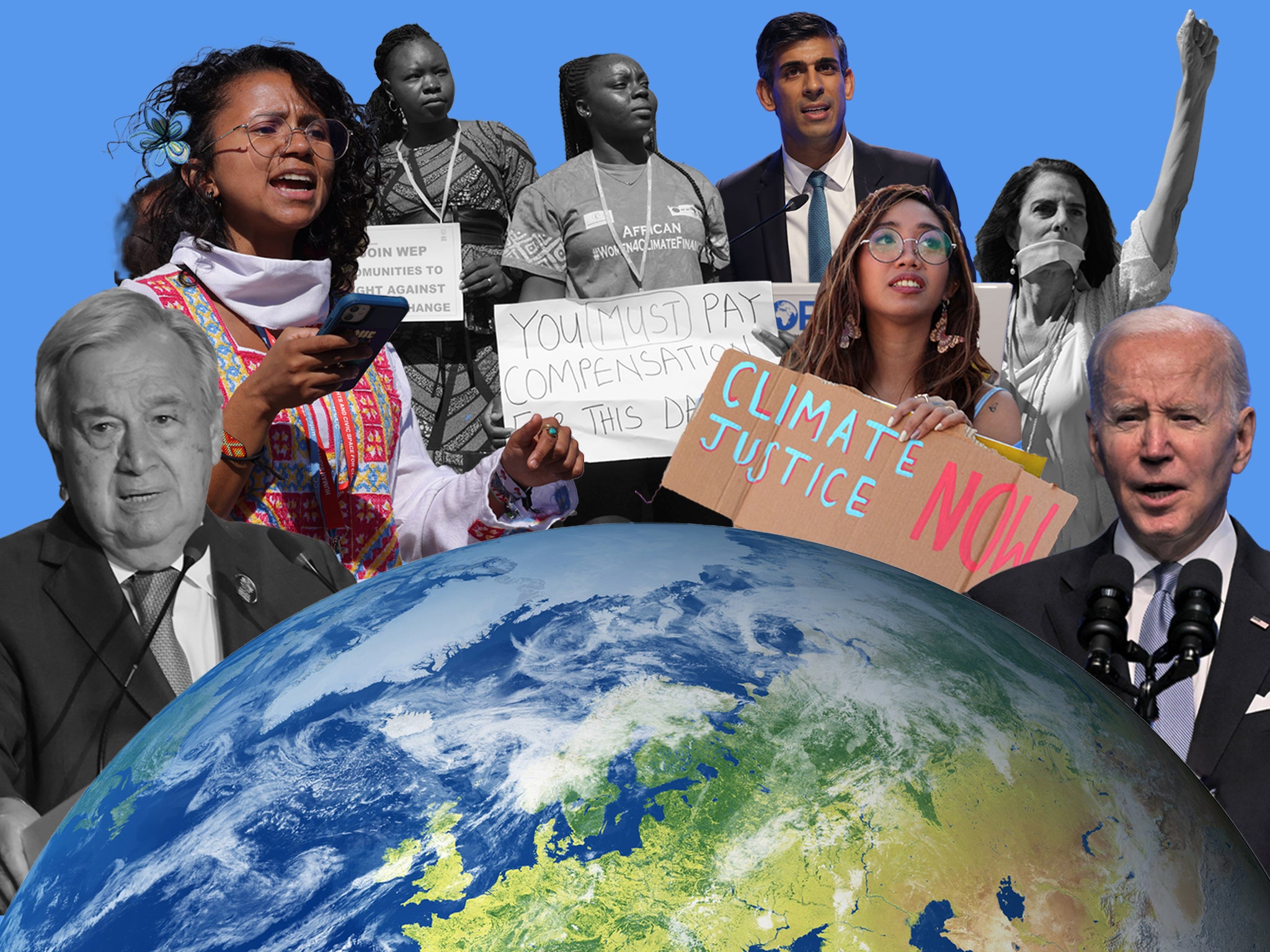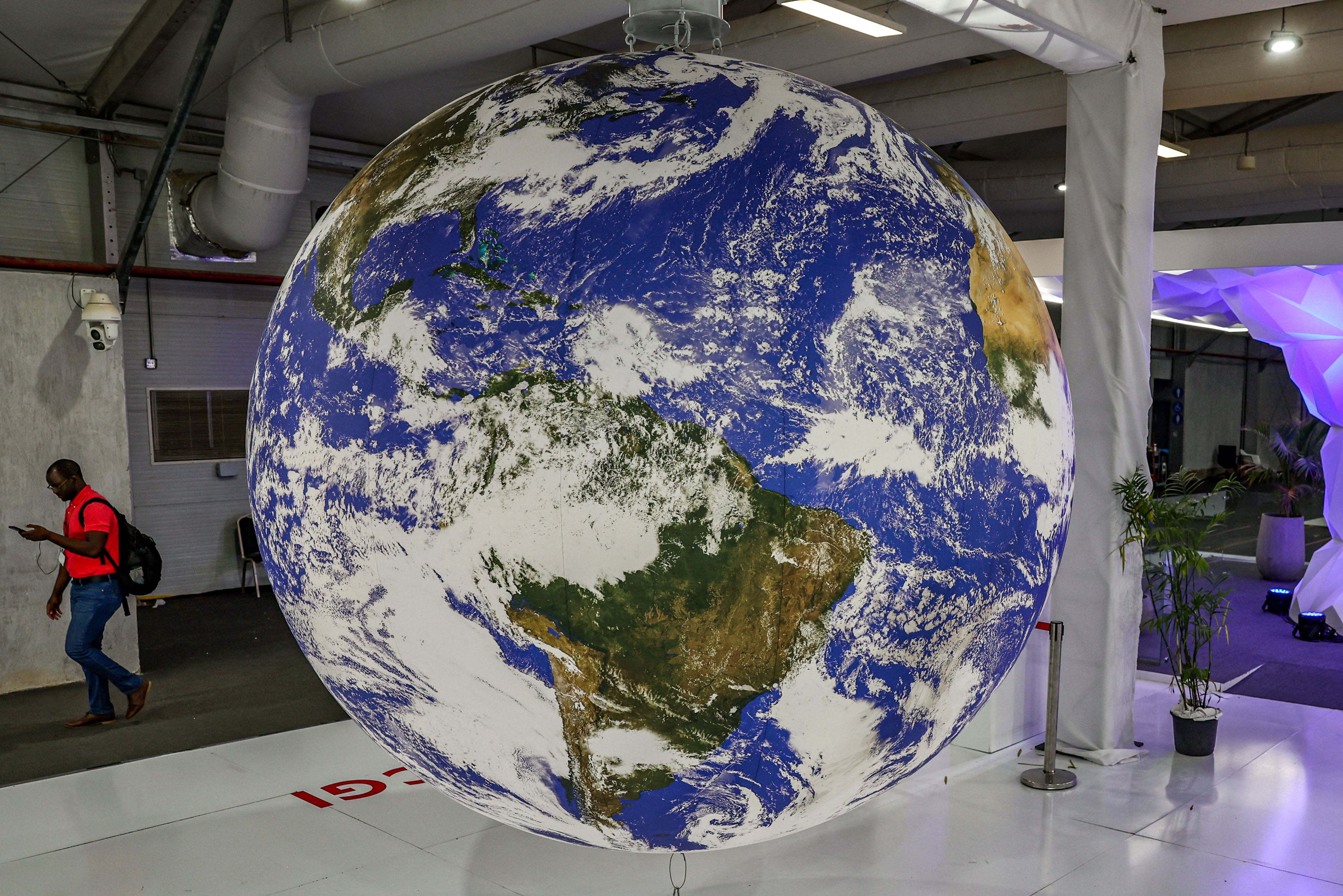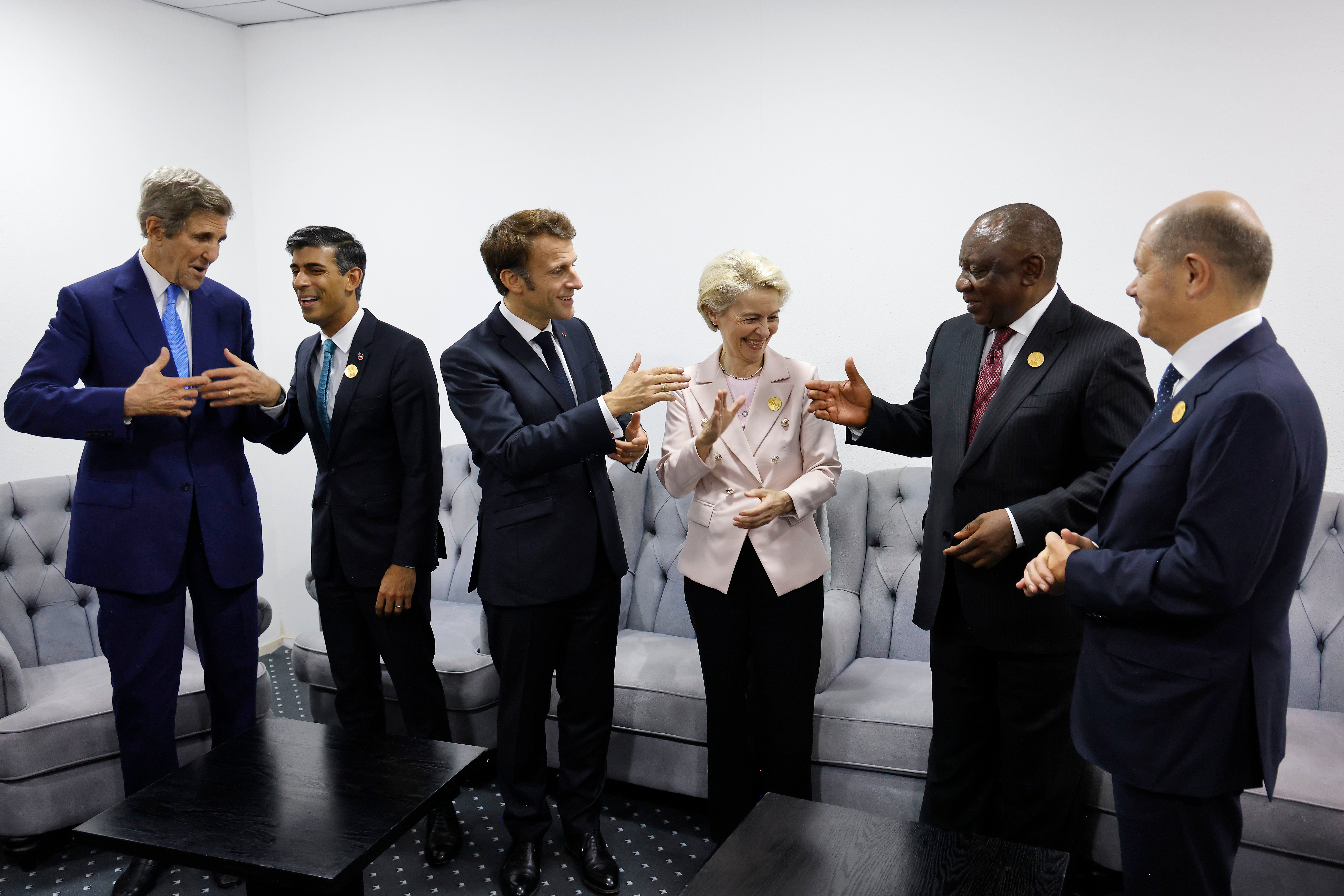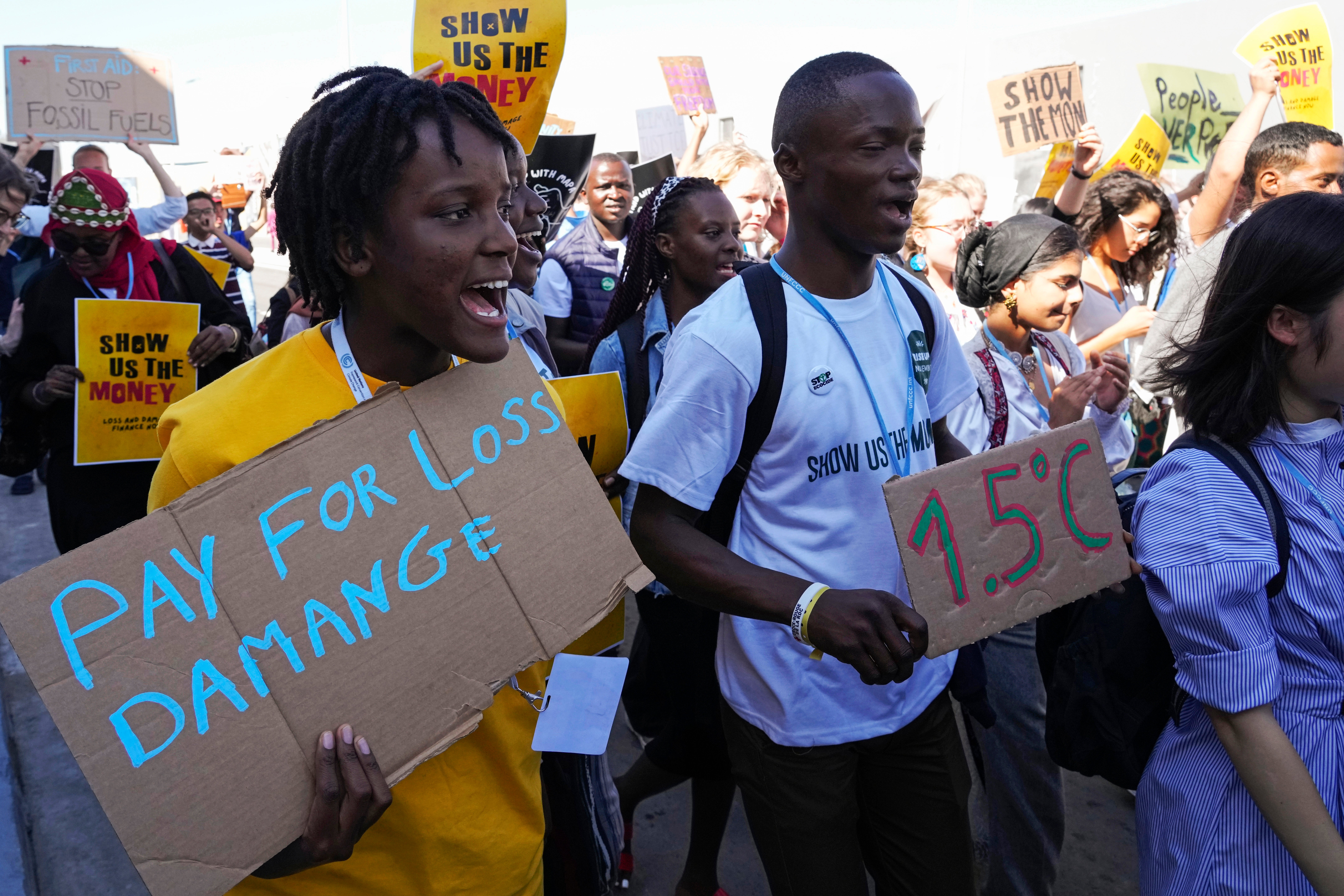After Cop27 – what next for the battle against the climate crisis?
Saphora Smith lays out what has to happen to build on the positives – and help mitigate the shortcomings – of the recent summit in Egypt


Our planet is still in the emergency room – this was the parting shot of the UN secretary general, Antonio Guterres, at the end of the Cop27 climate summit in Egypt. Guterres welcomed a breakthrough agreement to set up a fund to compensate vulnerable nations for destruction caused by the climate crisis, but warned that the summit’s failure to address the need to reduce emissions left the planet in a perilous state.
“A fund for loss and damage is essential – but it’s not an answer if the climate crisis washes a small island state off the map – or turns an entire African country to desert,” he said. One commentator put it this way: at Cop27 the world may have agreed to start treating the symptoms of the climate crisis but did not do enough to eradicate its cause.
So what now?
As delegations reflect on the Sharm el-Sheikh summit and new negotiations get underway to better protect the world’s ecosystems at a UN biodiversity summit in Canada, The Independent has unpacked what needs to happen to build on Cop27’s successes and mitigate its shortcomings.
Who pays?
The great success story of the “Sharm” summit was a deal to establish a fund to compensate vulnerable nations for the irreparable damage caused by climate-fuelled extreme weather and slow-onset impacts like rising sea levels.
Developing countries that are responsible for a tiny share of global greenhouse gas emissions and yet find themselves on the frontlines of the crisis have been demanding compensation for three decades.
Meanwhile, rich countries had been reluctant to agree fearing legal liability for potentially incalculable levels of damage after years of burning fossil fuels.
Now that an agreement has been reached, the tricky business of deciding who should contribute to the fund, by how much and which countries should receive the compensation must begin.
“It’s currently an empty bucket and we need it filled if it’s actually going to be effective,” said Mohamed Adow, director Power Shift Africa, a climate think tank that aims to mobilise climate action in Africa.

At Cop27 nations agreed to establish a transitional committee, with representatives from 24 countries, tasked with submitting recommendations as to how the fund should work to countries at Cop28, which will be held in the United Arab Emirates next year.
States will then need to agree on how the fund operates, and there is hope among small island nations that the fund could be up and running by the end of next year.
Time is of the essence. By 2030, losses and damages are estimated to cost developing countries somewhere between $290bn (£250bn) and $580bn a year. And by mid-century, that is predicted to rise to up to $1.74bn.
Scotland became the first nation to offer loss and damage funding at Cop26 in Glasgow last year, and its leadership led other nations to announce small bundles of funding in Egypt. Vulnerable nations and activists hope the agreement to establish a fund will formalise loss and damage compensation, simplify access to funds and provide more and ongoing support.
“What we don’t need is scraps of finance in lots of different pots, all with different rules about how to access it and who qualifies,” says Adow.
One of the key issues that will need to be ironed out, however, is whether or not rapidly developing nations like China, which now emit large amounts of planet-heating emissions, pay into a loss and damage fund rather than just the historically high-emitting countries.
If loss and damage was the crowning achievement of Cop27, it is widely accepted that the summit failed to make meaningful progress to reduce emissions
The agreement also calls for “innovative sources” of funding. Among the ideas being floated are windfall taxes on the profits of oil and gas firms and a levy on international shipping. The UN’s Guterres is also expected to bring together the heads of international financial bodies to identify ways they can provide loss and damage finance.
This could be by freeing up more funding at discounted rates – or pausing debt repayments to help countries recover when disasters strike, says Alex Scott, head of the climate diplomacy and geopolitics programme at climate think tank E3G.
The ambassador to the UN for Antigua and Barbuda, Conrod Hunte – who is the lead climate negotiator for the Alliance of Small Island States – says he does not mind where the money came from.
“There’s a historic responsibility by the polluters, I hope that is enshrined somewhere in any decision,” he says. However, any funds whether from countries or the private sector will “certainly help.”
Adapting to extremes
In Glasgow, developed countries agreed to double the amount they spend on helping poorer countries adapt to climate impacts from 2019 levels by 2025.
Adaptation to climate change might include raising roads and railway lines to protect them from rising sea levels, redesigning infrastructure so it can better cope with extreme heat, and restoring wetlands and coral reefs to buffer hurricanes.
The Cop27 agreement requests a report to be produced on this pledge, which will help identify any gaps. There is also more work that needs to be done to establish what is known as a global goal on adaptation.
This was designed to be the counterpart to the goal from the Paris climate conference in 2015 of limiting temperature rise to “well below 2C” – if not 1.5C – by the end of the century compared to pre-industrial levels. Establishing a goal for adaptation is more complex, however, and it remains unclear what this will look like.

It’s possible it could end up being similar to the Sustainable Development Goals by presenting several metrics for measuring progress, says David Waskow, director of International Climate Initiative at the World Resources Institute, an environmental and development think tank.
Keeping 1.5C ‘alive’
If loss and damage was the crowning achievement of Cop27, it is widely accepted that the summit failed to make meaningful progress to reduce emissions.
While the Paris commitment to limit global heating was reaffirmed in the text, many felt Cop27 did not increase ambition from Glasgow. And did not do enough to spell out how emissions will be cut, despite being billed the “implementation” Cop.
“We held the line in Glasgow when we needed to go further,” Tina Stege, climate envoy for the Marshall Islands, told a panel hosted by The Independent last week. “I was very worried that we wouldn’t even be able to hold the line that was established in Glasgow.”
But, she added, often what has been a relative failure at one Cop, can be a foundation for success at the next. Stege was not the only delegate to expect a renewed focus on cutting emissions at Cop28 in the United Arab Emirates.
For one thing, the first-ever global summary of the world’s progress toward limiting global heating will be published ahead of that summit. A key task of the conference will then be to discuss its findings and agree on key recommendations for the future.
Many agree that there is currently not enough political will to cut emissions, as well as not enough capital to help countries transition to renewable-fuelled economies
Waskow says he has always seen Cop27 and Cop28 as almost a “two Cop sequence” with the Egypt summit focused on loss and damage and the UAE conference focused on reducing emissions.
“I think it will come very much back to centre stage,” he says.
In particular, experts think that the call for nations to phase down – or phase out – the use of all fossil fuels, the chief cause of global heating, will be high on the agenda. India, backed by dozens of countries and the European Union, had pushed for nations to agree to a phasedown of all fossil fuels at Cop27 but it didn’t make it into the final text.
“It’s now clear that this cannot be avoided next year, and I think many progressive countries and countries who are fighting for ambition will be clear that this has to be an outcome at Cop28,” Tom Evans, a policy advisor at E3G, told our panel discussion last week.
Ambassador Hunte, of Antigua and Barbuda, says he will also be keeping an eye out for ambiguous language such as “low-emission energy” which he says could be interpreted as gas.
Many agree that there is currently not enough political will to cut emissions, as well as not enough capital to help countries transition to renewable-fuelled economies.
One way to plug this “finance gap” is for rich countries to deliver on the pledges that are still outstanding, says Mr Adow.
“The Covid pandemic and war in Ukraine shows that the rich world can mobilise billions if it chooses to,” he says. “We need to see a similar shift in thinking that treats the climate crisis like the true emergency that it is and to get money spent on decarbonisation at speed.”

Another way to raise funds would be for multilateral development banks to reform their lending so they are able to take on more risk, according to Scott. A third is to increase discounted financing from rich countries to the developing world, and a fourth is to cut debt payments from developing countries in return for spending on their own climate transitions, she added.
There are also other suggestions including the prime minister of Barbados, Mia Mottley’s call for developing countries to be able to borrow funds more cheaply, and what has been dubbed a “mitigation trust fund” that would allow developing nations to invest in renewables.
A recent report, commissioned by the governments of Egypt and the UK, found that around $1tn of foreign climate finance could be unlocked and invested in the developing world a year by 2030.
A plan to save nature
Inextricably linked to tackling climate change is the bid to protect the world’s ecosystems that is currently playing out at the Cop15 United Nations biodiversity summit in Montreal, Canada.
Among the aims of the nearly 200 countries attending the summit is finalising an agreement to protect 30 per cent of global land and marine areas by 2030.
Environmentalists are saying the conference needs to deliver a Paris-style broad agreement for nature.
State of affairs
Overall despite the historic agreement at Cop27, much more progress is required on loss and damage, adaptation and limiting global heating to 1.5C.
Scott, of the climate think tank E3G, says she believes part of the reason for the lack of ambition on reducing emissions has been due to a breakdown of trust between developing and developed countries over compensation for loss and damage caused by the climate crisis.
“Getting a grip” of climate compensation is crucial to rebuilding that trust and addressing the other challenges together, she says. For some, the lack of progress on curbing global heating at the Cop27 summit brings the effectiveness of Cops overall into question.
However, there are many who say that – while flawed – the summits are currently the best mechanism the world has for addressing the crisis. Adow, of Power Shift Africa, is one of them. “Climate change is a global problem and it requires a global solution,” he says.
Join our commenting forum
Join thought-provoking conversations, follow other Independent readers and see their replies
Comments



Bookmark popover
Removed from bookmarks